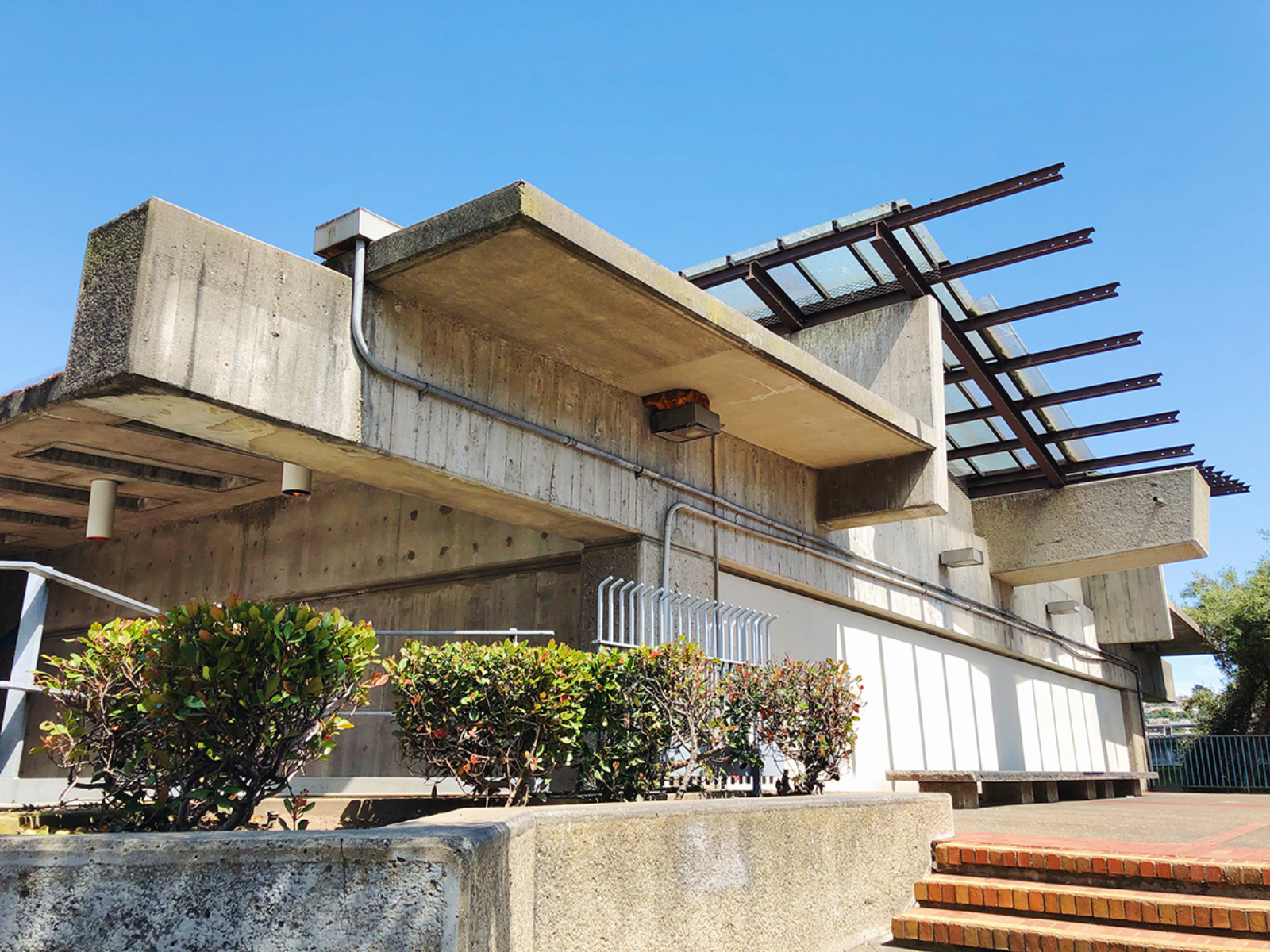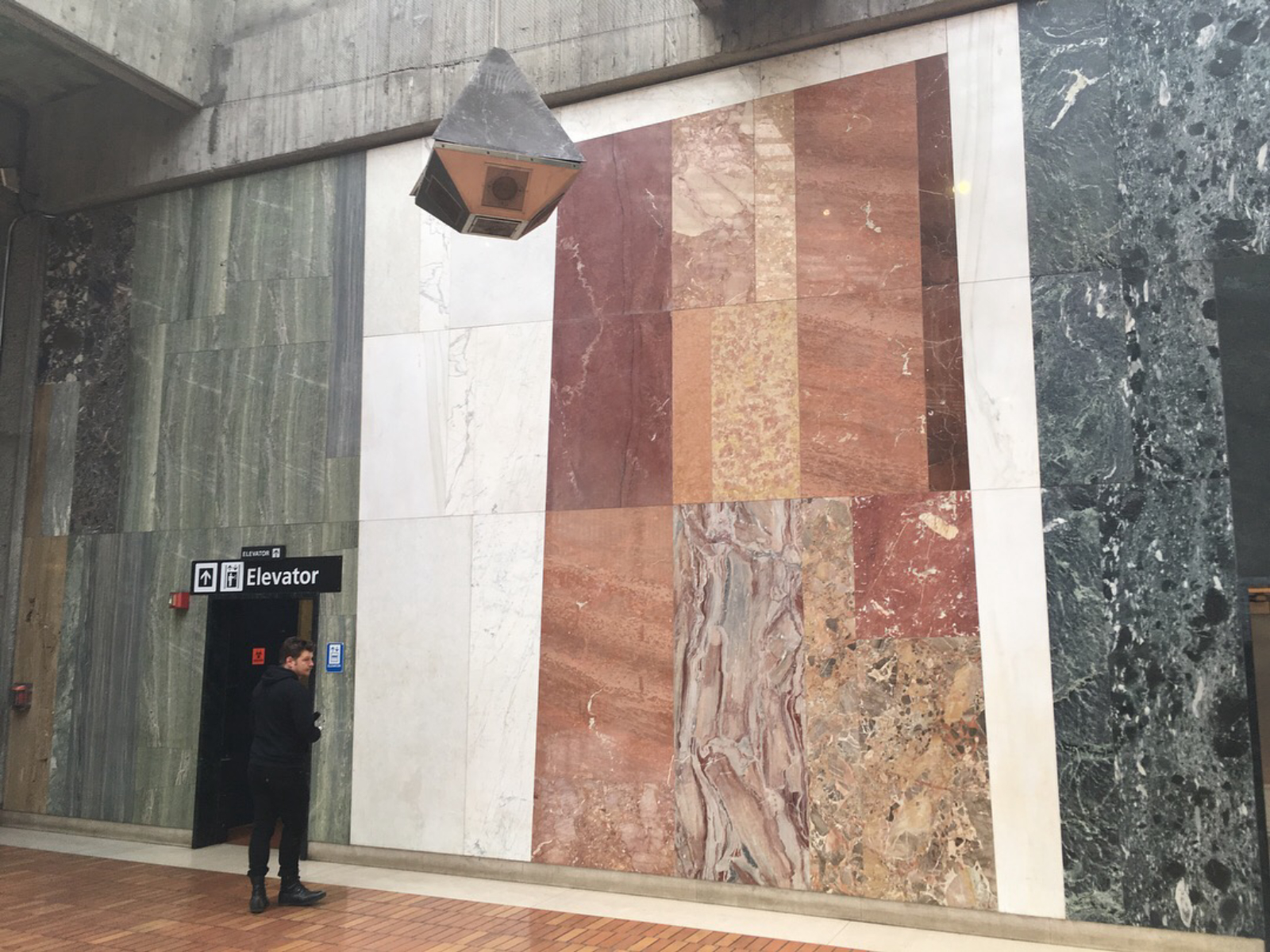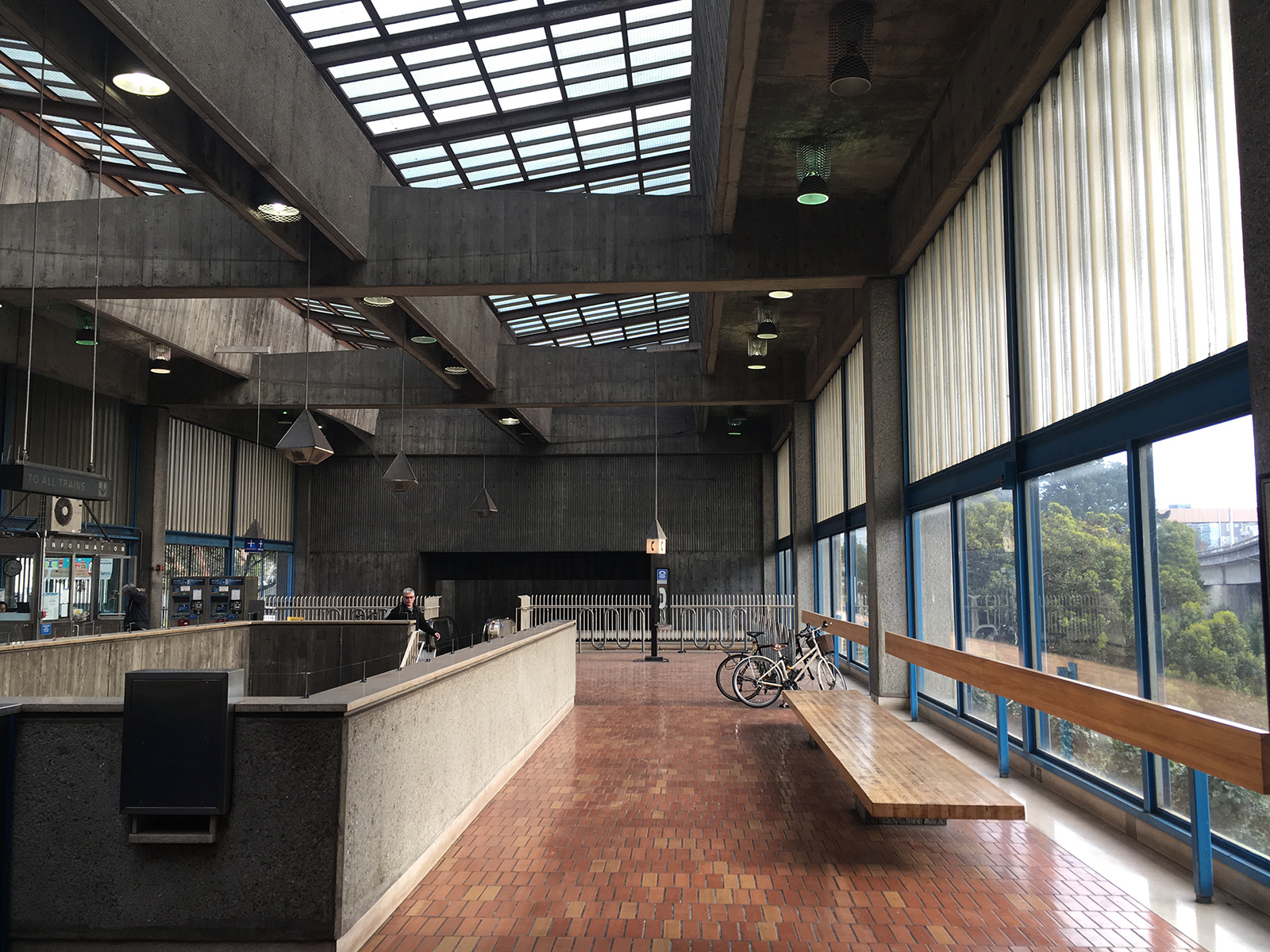How to Visit
Open to the public
Location
2901 Diamond StreetSan Francisco, CA, 94131


Glen Park BART Station, Corlett + Spackman; Ernest Born, San Francisco, CA, 1973.
Jack McCarthy

Glen Park BART Station
Hannah Simonson

Glen Park BART Station
Hannah Simonson
Open to the public

1973
The Glen Park BART Station is considered by many to be the architectural “crown jewel” of the regional Bay Area Rapid Transit (BART) system. The design by Corlett + Spackman and Ernest Born elevates the architecture and spatial arrangement for what could have been a very utilitarian structure to a very satisfying experience. The building stands proudly in a challenging site wedged between major streets and a freeway. The cast-in-place concrete has a beautiful board-formed finish. Strongly angled cantilevers express the building’s structural components, including a dramatic butterfly roof. High ceilings and large glazed openings that bring light all the way down to the platform level humanize this imposing Brutalist building. The clear expression of concrete structure is a welcome deviation from the Midcentury Modernist post-and-beam tradition. A polychromatic marble feature wall in the entry hall and the wide, almost monumental entry facing the local Glen Park Village provide visitors entering from the street or off the train a welcoming experience. The entry extends to a well-designed brick and concrete plaza that helps channel pedestrian traffic, bus arrivals, and car drops.
Local architects Corlett & Spackman built several commercial and educational buildings including the Squaw Valley Olympic Stadium (1964). Ernest Born (1898−1992), painter, illustrator and architect, collaborated on this station—as well as the nearby Balboa Park BART Station—with architects Corlett & Spackman. It was Born’s last built project before he retired to San Diego.